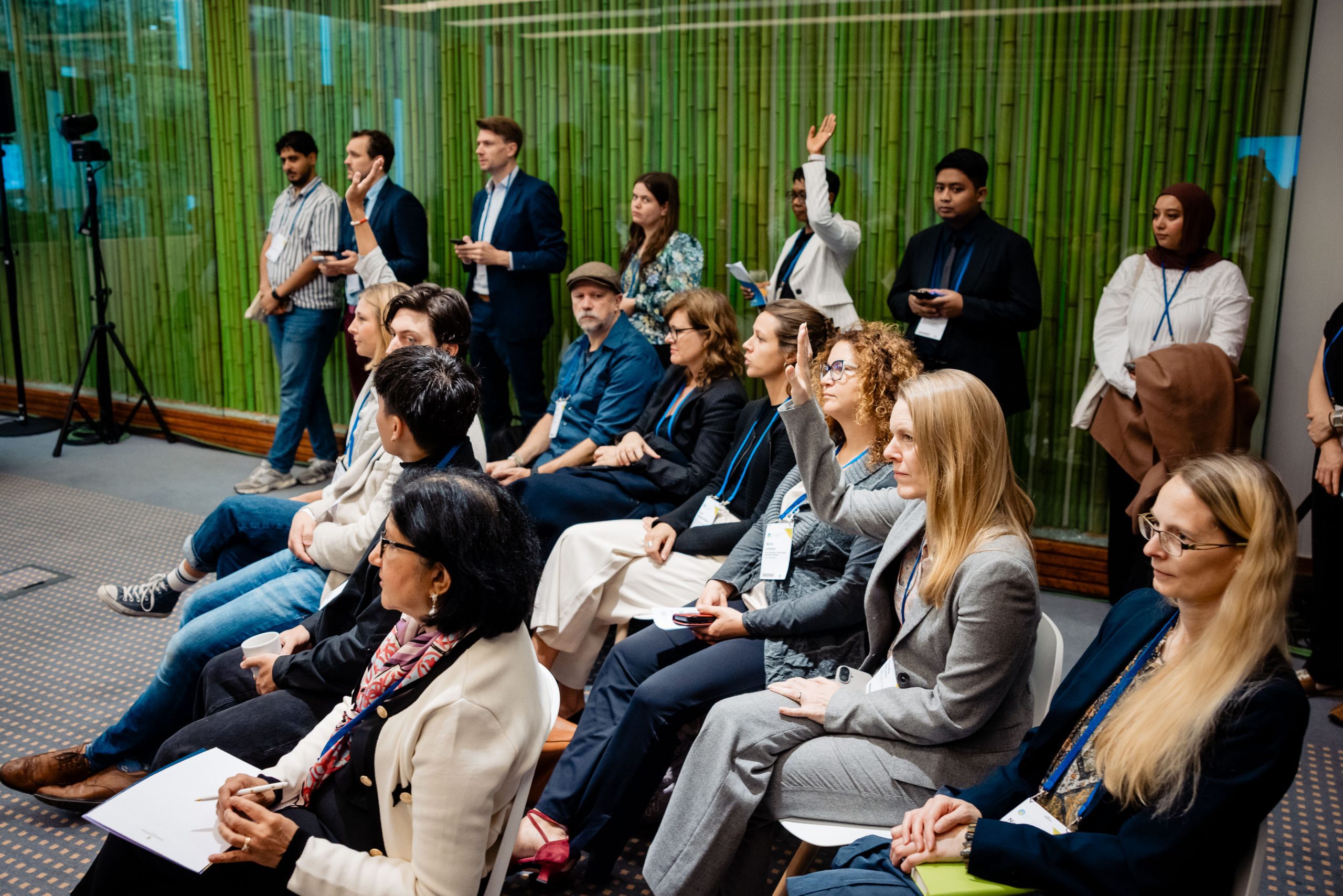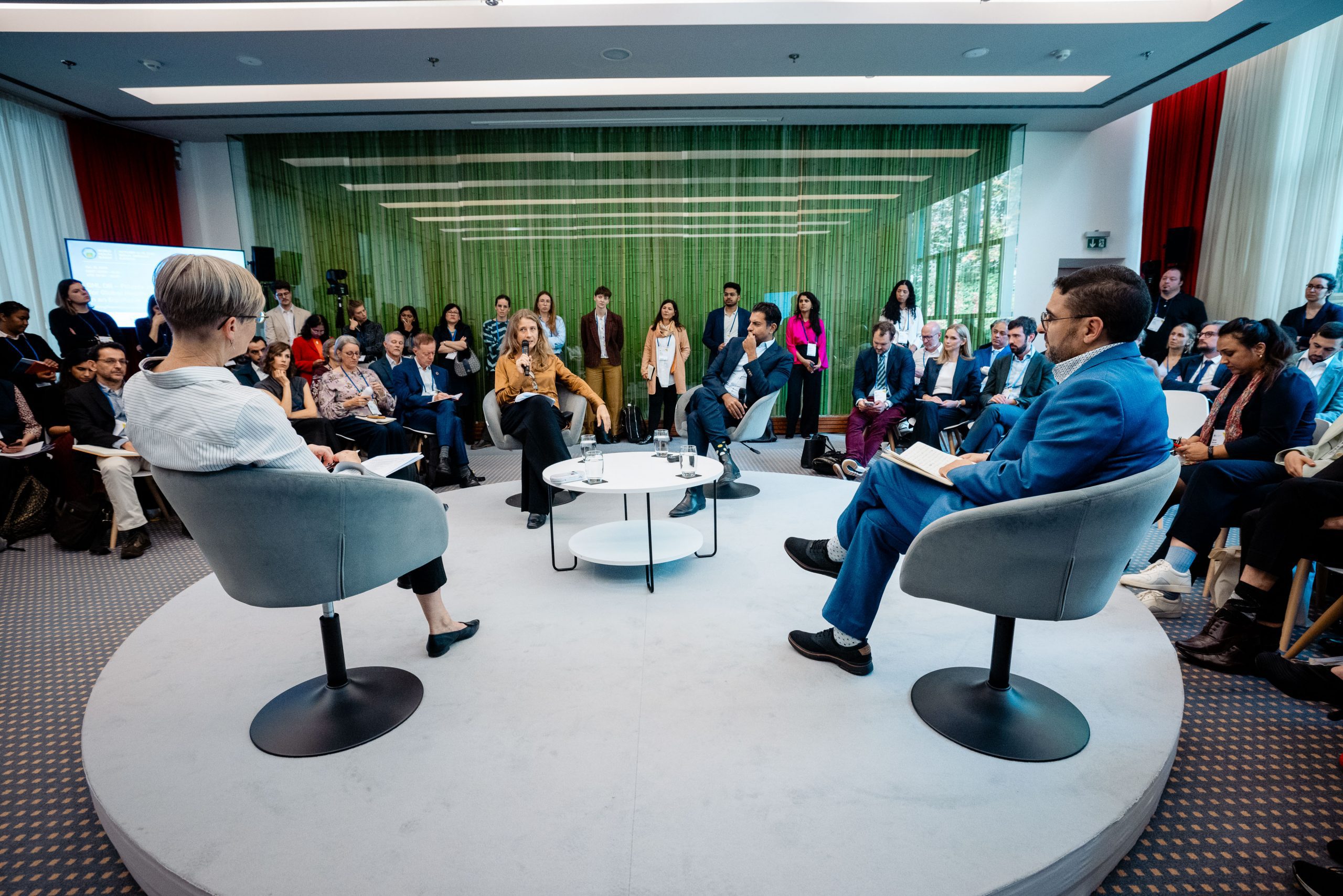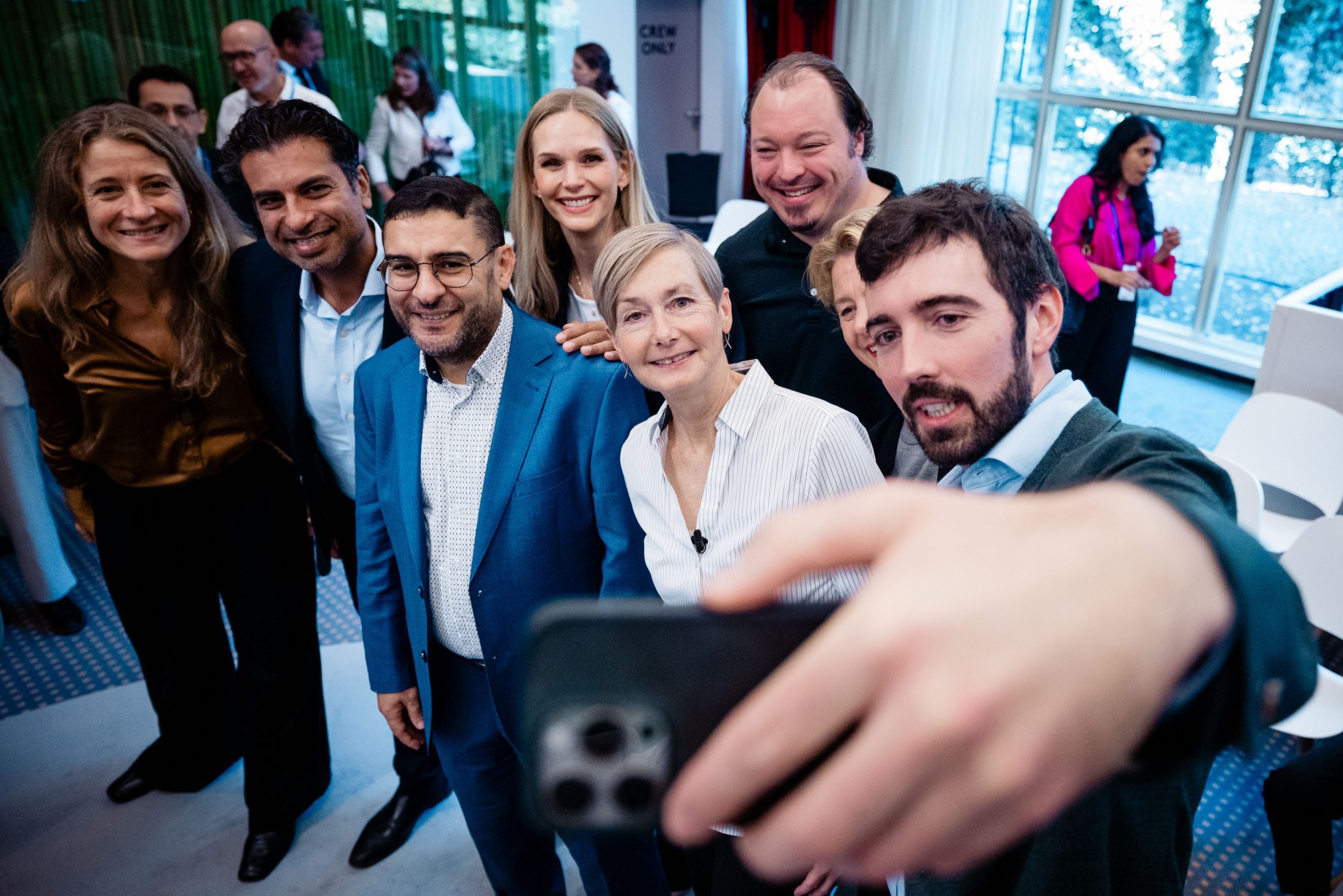Panel Recap: Unlocking Private Investments for Public Good in Global Health, Building Equitable Partnerships to Address Funding Gaps and Improve Health Outcomes

At this year’s World Health Summit, the panel “Private Investments in Public Good for Global Health: How Do We Combine Forces in an Equitable Way, Building Partnerships to Address Funding Gaps and Improve Health Outcomes” brought together an inspiring mix of leaders across the public, private, and philanthropic sectors to tackle an urgent issue: the dramatic and ongoing decline in institutional funding for global health – particularly in low- and middle-income countries (LMICs).
Moderated by Dr. Beate Kampmann (Charité – Universitätsmedizin Berlin, Charité Center for Global Health) and Kyra Constanze Pauly (Managing Director, Bayer Foundation), the session invited dialogue on how we can move beyond traditional donor models and toward radical, practical collaboration, with new ways of financing, co-creating, and scaling healthcare solutions that reach the world’s most vulnerable populations.
The panel included Julius Emmrich and Samuel Knauss, our co-founders and co-managing directors, who shared how technology and partnership are transforming resilient healthcare delivery in LMICs; Bahaa Eddine Sarroukh, Executive Director at the Philips Foundation, bringing insight from a corporate-philanthropic hybrid approach; Cecile Nadine Billaux from the European Commission, who reflected on the structural role of large institutions in shaping equitable funding ecosystems; and Aly Rahim, Global Program Manager from the World Bank, who emphasized mechanisms that enable accountability and transparency in public goods financing.
From the outset, the tone of the session was clear: this is a call to action. With institutional donors pulling back, the health sector must urgently mobilize private capital, philanthropy, and public support in new, blended ways. But these partnerships must be equitable, sustainable, and genuinely catalytic, de-risking innovation instead of duplicating outdated development patterns.

Elucid as a Model for Catalytic Collaboration
During the session, Elucid was showcased as an exemplary case-study of how catalytic public-private partnerships can drive health innovation. Julius introduced the company’s mission and model, while Samuel offered a deep-dive conversation into how Elucid’s solutions transform supply chains and increase the resilience and speed of health access in underserved settings.
Belinda Borck from Tony’s Chocolonely, and Markus Beck, from Gavi, the Vaccine Alliance, were also in attedance. We partner with both companies, and they shared their insights from our collaborations and programs.
As Markus Beck from Gavi summarized during the discussion:
“We come in as a catalytic support […]. Once the structures are set up and people realise the value [of funding healthcare access], we can take ourselves out of the equation.”
The Role of Evidence and Co-Creation
Moderators Kyra Pauly and Beate Kampmann, both of whom have partnered with Elucid in real-world collaborations, also emphasized the role of evidence and impact measurement. Dr. Kampmann’s leadership at Charité’s Global Health Impact Lab underlines why strong data and co-designed research are crucial to de-risking innovation and building scalable healthcare models. This is why Elucid is collaborating with the Charité and a local universities to conduct rigorous research to understand the impact within our ongoing programs in Ghana and Côte d’Ivoire, with first results in Ghana expected in early 2026.
The focus on evidence-based interventions and practice within the panel highlighted that partnerships can succeed when trust, rigor, and shared intent are foundational to collaborations and partnerships from the very beginning.

Key Takeaways for Those Who Missed the Panel
You weren’t able to make it to the panel? Don’t worry. Below, we’ve summarised some of the most important perspectives and takeaways from the session, including Julius Emmrich and Samuel Knauss’s reflections.
- Institutional funding alone is not enough: new investment models must emerge to close the growing health financing gap in LMICs.
- Private sector and philanthropic capital play a crucial role: but must be deployed responsibly, equitably, and in long-term partnership with local actors.
- Blended finance models can de-risk innovation and unlock scalable, sustainable approaches to public health systems.
- Partnerships like Elucid’s with Gavi, the Vaccine Alliance and Tony’s Chocolonely are already showing what’s possible, and encouraging others to step up.
- We need bold, creative, and catalytic collaborations, designed around complementarity, shared value, and long-term impact.
Reflections from Elucid
Finally, we asked Julius and Samuel to provide us with their perspectives from the panel: what do they think is the most important thing to take away?
Julius said…

The “funding gap” in global health is well known and not new at all – but still featured in many of the conversations. What was new and encouraging is the growing recognition that the private sector and PPPs can play a meaningful role in bridging it. This is not about „aid“, It is about creating the right incentives for the private sector to invest in healthcare because it makes sense: it drives innovation for companies, builds trust and brand value, strengthens relationships with governments, and ultimately improves supply chain resilience. Seeing both public and private actors come together at WHS around this shared understanding and generating quite some excitement around it has been one of the most inspiring parts of the discussions. – Julius Emmrich
Samuel said…

The most encouraging shift I observed was the growing commitment to cross-sectoral collaboration as a practical necessity, not just an aspiration. When public partners, private sector actors, philanthropic organizations, and governments sit at the same table with a shared goal—access to healthcare for all—we move beyond fragmented efforts toward coordinated funding and implementation that can truly bridge the gap. Central to making this work is shared data: transparent, standardized health data that allows all partners to measure impact, allocate resources effectively, and hold each other accountable to our common objectives.
Finally…
This WHS session was more than a conversation: it was a spark! The health equity challenges ahead of us are daunting, but the solutions already exist. Now is the time to build partnerships that are faster, bolder, and more equitable. Because when we combine forces the right way, we don’t just close funding gaps: we transform entire systems.

Image credit for photos used in this article go to The World Health Summit



